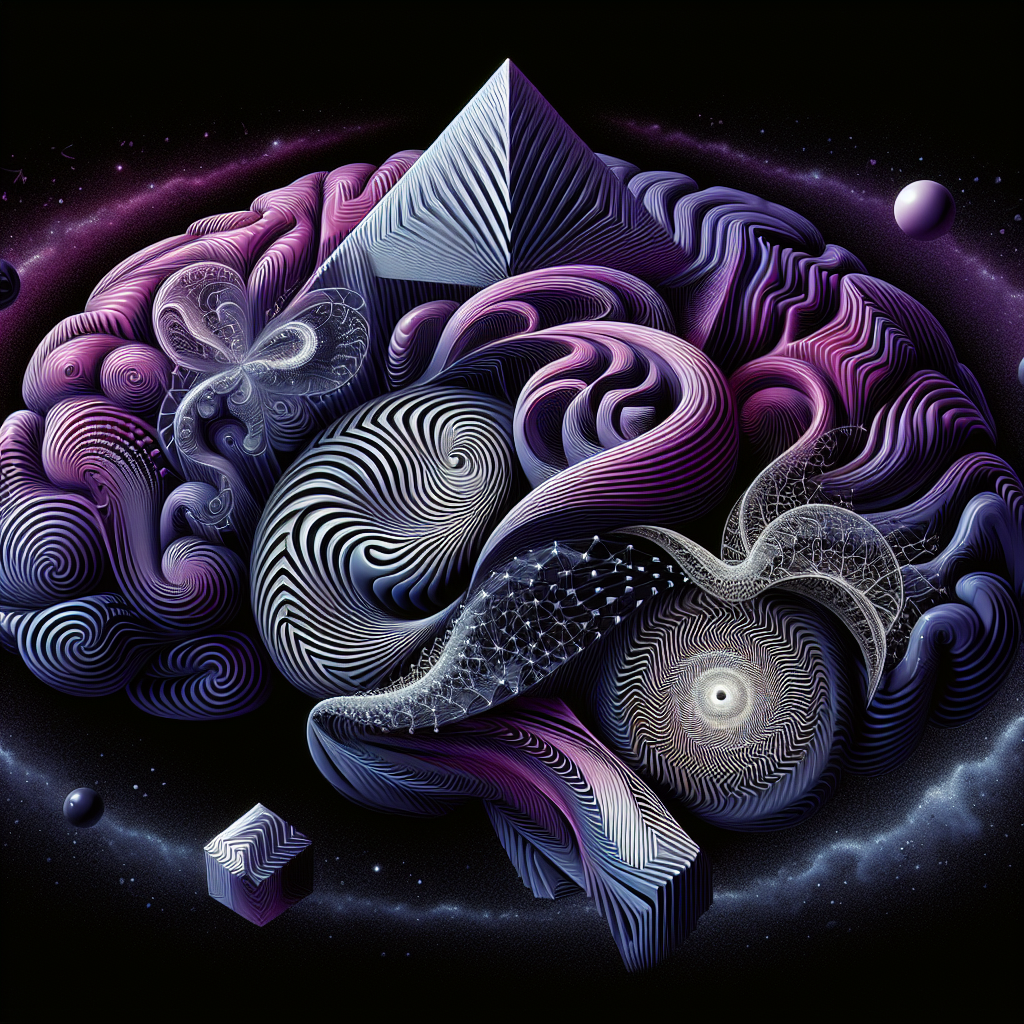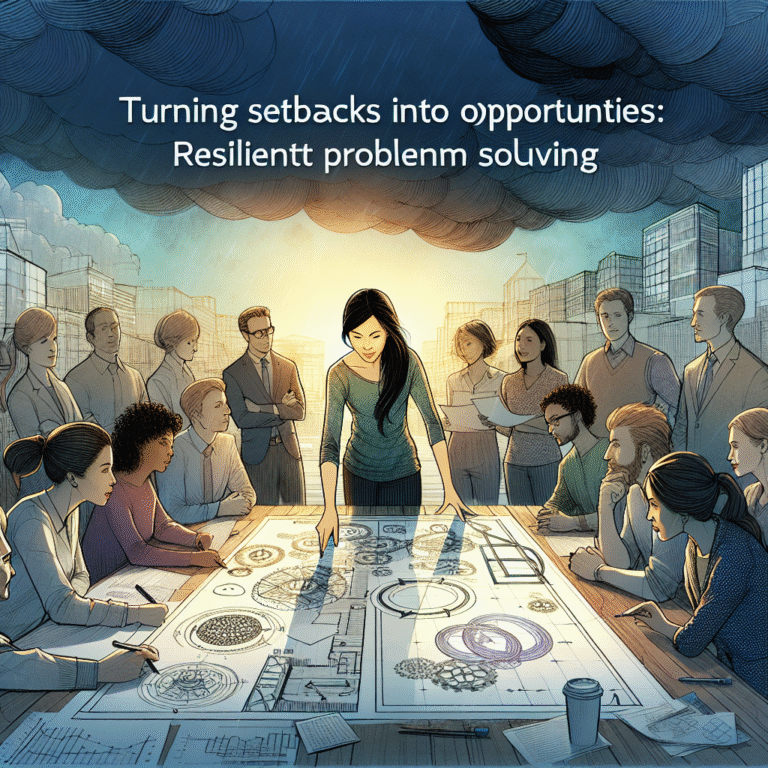
Introduction
Imagine staring at a piece of art that seems to swirl and dance before your eyes, or perhaps witnessing a static image that shifts and transforms in unexpected ways. These intriguing experiences are not just tricks of light or clever artistry; they are vivid examples of how our brains can sometimes misinterpret the world around us. In this enlightening exploration, "Illusions Explained: How Our Brain Sometimes Gets Vision Wrong," we’ll delve into the fascinating realm of visual illusions, unveil the secrets of our perceptual processes, and reveal how these misunderstandings illustrate the complexities of human cognition.
Understanding visual illusions is not merely a diverting pastime; it offers profound insights into the brain’s workings, revealing how we can sometimes perceive reality through colored glasses—quite literally! Whether you’re an artist, a scientist, or simply a curious observer, this discussion will aim to captivate you with engaging insights and actionable revelations.
The Science of Vision
Anatomy of the Eye
To fully grasp how visual illusions work, we must first understand the mechanisms behind our vision. The human eye, an intricate organ, captures light and converts it into neural signals that our brains interpret. This process involves several key structures:
- Cornea: The clear front layer that bends light.
- Lens: Adjusts to focus light onto the retina.
- Retina: Contains photoreceptors (rods and cones) that detect light and color.
- Optic Nerve: Transmits signals from the retina to the brain.
How the Brain Processes Visual Information
Once light reaches the retina, the journey of visual information has just begun. Signals from the eye follow a complex pathway before reaching the visual cortex in the brain, where the magic of perception happens. But this pathway isn’t just a direct route; it involves intricate processing that can lead to both accurate and distorted interpretations.
Key Processing Stages:
- Feature Detection: Recognizing basic elements like edges, colors, and motion.
- Pattern Recognition: Combining features to identify shapes and objects.
- Contextual Interpretation: Using prior knowledge and context to make sense of what’s seen.
In the next sections, we’ll explore how this intricate process can lead to remarkable visual illusions.
Types of Visual Illusions
Visual illusions can be categorized into several types. Understanding these categories provides valuable insights into how our brains interpret visual stimuli:
1. Geometric Illusions
Geometric illusions arise from the way our brains perceive shapes and dimensions, often leading us to see things that aren’t there.
Example: The Müller-Lyer illusion, where two lines of equal length appear to be different lengths due to the orientation of arrows at their ends.
Case Study: The Müller-Lyer Illusion
Researchers have demonstrated that cultural differences can influence susceptibility to this illusion. Studies show that individuals from industrialized societies are more affected by the Müller-Lyer illusion than those from non-industrialized societies. This suggests that our environment shapes how we interpret visual information, highlighting the impact of experience on perception.
| Group | Average Perception Bias (%) |
|---|---|
| Urban | 30% |
| Rural | 15% |
2. Color Illusions
Color illusions illustrate how our perception of color can be significantly influenced by surrounding colors and lighting conditions.
Example: The checker shadow illusion, where two squares on a checkerboard appear different in color due to the surrounding shadows.
Case Study: The Checker Shadow Illusion
In a study published in Nature, researchers found that participants still perceived the squares as different colors even when isolated from the checkerboard context. This underlines how contextual factors heavily influence color perception, reinforcing the concept that our brains often rely on external cues to interpret what we see.
3. Motion Illusions
Motion illusions exploit the way we perceive motion, often tricking our brains into seeing movement where none exists.
Example: The rotating snakes illusion, where still images appear to be in motion due to the arrangement of colors and shapes.
Case Study: Rotating Snakes Illusion
A study involving eye-tracking technology found that the perceived motion is related to the way our eyes naturally track the colors and contrasts within the illusion. The participants’ eye movements mirrored the perceived movement of the circles, demonstrating how perception and eye movement are intricately linked.
How Illusions Shape Our Understanding of Reality
The Role of Expectations and Prior Knowledge
One of the most intriguing aspects of how our brains process visual information is the role of expectations and previous experiences. Our brains often rely on schemas or mental frameworks to interpret new information. This reliance can lead to misunderstandings when the visual input contradicts our expectations.
The Impact of Context and Surroundings
As we’ve discussed with the Müller-Lyer and checker shadow illusions, the context in which we view something can drastically alter our perception. This phenomenon has profound implications, not just for art and design but also in real-world contexts where accurate perception is crucial, such as aviation and driving.
Psychological Insights from Illusions
Visual illusions also serve as a fascinating entry point into psychology. They reveal the underlying mechanisms of attention, memory, and cognitive processing. By studying how and why our perception fails, psychologists can uncover the strengths and weaknesses of human cognition.
The Neural Basis of Illusions
Brain Imaging Studies
Neuroscience has made significant advancements in understanding how illusions affect the brain. Functional imaging techniques like fMRI and PET scans have revealed how specific brain regions activate in response to visual stimuli, helping researchers pinpoint where perception might go awry.
The Role of Neural Pathways
The neural pathways involved in visual processing are complex and interconnected. Disruptions or enhancements in this network can lead to different perceptual outcomes. For example, the ventral stream, responsible for object recognition, interacts closely with the dorsal stream, which processes spatial awareness and motion.
Practical Applications of Understanding Visual Illusions
Understanding how our brain sometimes gets vision wrong has practical applications in various fields, from art to technology. Here are a few notable examples:
Art and Design
Artists and designers often leverage visual illusions to create compelling works. By understanding how color, shape, and context interact, they can craft pieces that evoke strong emotional responses.
Virtual Reality and Gaming
In virtual reality (VR) and gaming, the principles of visual perception guide design choices. By incorporating principles from visual illusions, developers can create more immersive and realistic experiences.
Education and Training
In fields like aviation and medicine, understanding visual perception is crucial. Training programs often incorporate scenarios that challenge perception, enhancing decision-making skills in high-stakes environments.
Overcoming Visual Misinterpretations
Training the Brain
Can we train our brains to be less susceptible to visual illusions? Some researchers argue that practice and exposure to illusions can heighten awareness and potentially improve our perceptual accuracy.
Mindfulness and Observation Techniques
Mindfulness practices can enhance our observational skills, allowing us to become more aware of how we perceive the world. Techniques that encourage slow, deliberate observation can help us mitigate misinterpretations.
Conclusion
In summarizing "Illusions Explained: How Our Brain Sometimes Gets Vision Wrong," we’ve uncovered a captivating intersection between art, science, and cognition. Visual illusions are more than mere parlor tricks; they are windows into our cognitive processes, revealing the mechanisms that govern how we perceive reality. By understanding these phenomena, we not only enhance our appreciation for art but also gain valuable insights into the intricacies of human cognition and perception.
So, the next time you encounter an illusion, take a moment to reflect—not just on what you see, but on the marvelous complexity of the mind creating that experience. Embrace these “mistakes” as opportunities for deeper understanding and a richer experience of the world around you.
FAQs
1. What causes visual illusions?
Visual illusions occur when the brain misinterprets visual information due to its reliance on context, past experiences, and perceptual biases.
2. Are visual illusions harmful?
No, visual illusions are generally harmless. They simply reflect how our brains process visual information, revealing valuable insights into human perception.
3. How are visual illusions used in art and design?
Artists and designers utilize principles of visual perception, including color, shape, and context, to create works that evoke emotional responses and engage viewers.
4. Can we train ourselves to see through illusions?
While it’s difficult to completely overcome visual illusions, practice and mindfulness can enhance perceptual awareness and improve observational skills.
5. Why do some people see illusions differently than others?
Differences in cultural background, prior knowledge, and individual cognitive processing can influence how people perceive illusions, leading to varied interpretations.
As we continue to explore the intriguing world of visual perception, remember that every illusion is an opportunity—a chance to question, learn, and expand our understanding of the incredible capabilities of the human brain.














